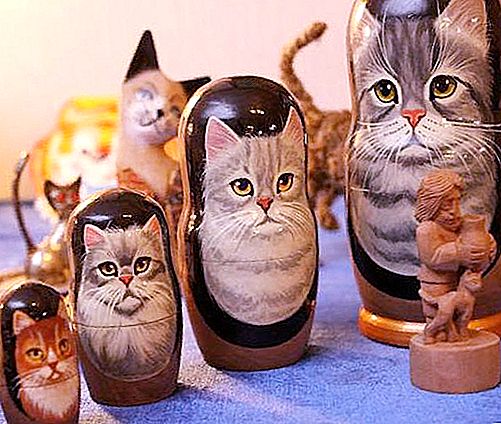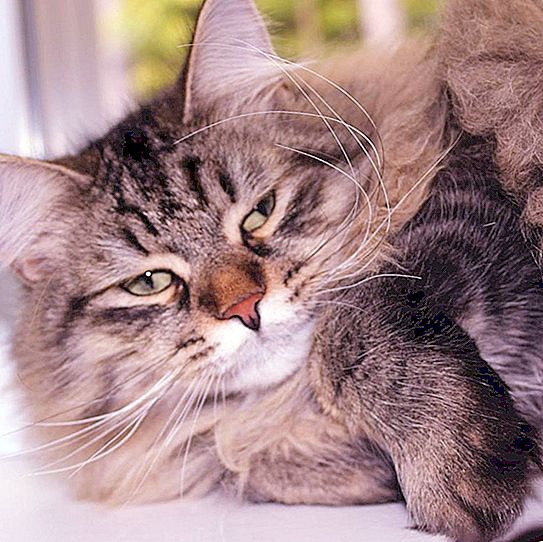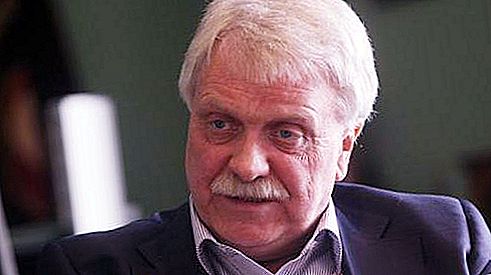The idea to create a cat museum came up with several Moscow artists. These cute animals inspired the authors of paintings, which have already accumulated a lot. In addition, there was a desire to tell more about these animals, since over the long history of the friendship of cats and humans, many art objects were created, a worthy place of which is in the museum.
So the Moscow cat museum appeared. His exposition consists of paintings, ceramic figurines, cast figures and books, toys and films - everything that is somehow connected with pussies. Its emblem is a white cat sitting on a chess hemisphere. The museum goes to exhibitions in other cities and countries. The most interesting are the events that he holds.
For many years, A. Abramov has been the director of the museum. He is happy to answer questions about a person’s creative view of a cat.
How it all began
In 1992, the Mars Gallery hosted the Cat Eye exhibition. The project was prepared by Inna Mankos and Andrei Abramov. This collection was the beginning of the exhibition. After that, other artists joined in. As a result, in the spring of 1993, the Cat Museum was opened in Moscow. The direction of his activity is artistic and cognitive. In order for a work to enter the exposition, you do not need to be a venerable artist, even beginners, unknown authors, get the right to exhibit their work here. There is only one condition: to tell something new on the topic.

Initially, the exposition was located in several rooms of the Biological Museum. For the exhibition, paintings were collected by familiar artists. Visitors liked the idea so much that they also connected to the replenishment of the exposition: they began to bring crafts, installations, postcards and much more.
Expositions of the Moscow cat museum
Real artists also helped to create paintings for the unique museum, many of which are known and work now in other countries. They wrote a series of works that reflect their understanding of the cat world. Some paintings were made not with paints, but with pieces of leather and fur. There are ceramic cats, wooden matryoshka cats, painted mugs and other exhibits. There are even works of the early twentieth century.
Over time, so much exhibition material has accumulated that it has been distributed on several topics:
- Cat's Eye is the first major collection.
- "Cat portraits" - famous cats and cats of celebrities, as well as ordinary people and their furry friends.
- "Woman and cat" - the cat's beginning in a woman and the wisdom of a woman in a cat, a beauty contest.

Themes are constantly expanding, form branches, new collections are born. It seems that the cat world lives its own life. At least not everything is said about cats.
Museum Activities
Love for cats brings people together. Catchers do not organize competitions on guard duty and do not pest their pets like dog lovers. Andrei Abramov and his associates are trying to acquaint people with their vision of the world. On their initiative, competitions and exhibitions are held, cat museums are opened in other cities and countries. In 2004, Cat Day was established. Of course, in March, the first day - March cats can now sing their songs, celebrating the holiday.

Cats in culture and art - the topic is very extensive. The museum organizes a children's competition where children draw their favorites. The best work becomes an exhibit. Children from Russia and the CIS countries participate in the competition.
Exhibitions of individual collections visited Amsterdam. This city is famous for the “cat barge”, on board which the artist Gordon Catania lived for a long time and there was a cat museum. In Moscow, his work “Mona Misa” is kept - a cat in the form of Mona Lisa. Festivals, concerts, auctions and sales exhibitions are organized. There are even international cat shows - in Europe they already know this project well.
Interesting information
The Cat Museum in Moscow collects all the information that applies to these animals. A. Abramov says that in a past life he was a cat. This, of course, is a joke, but in order to understand cats, you really need to know them well: a lot of proverbs and sayings will be adopted by different countries and peoples. This is a characteristic relationship with people: single and family, with women and men. There are several portraits in the art gallery, which depict a man with a cat, and, sometimes, it does not immediately become clear who is in charge.

The scenes from life: a man saves a homeless cat by wrapping it in his jacket. The old man looks with an extinct gaze into the distance, and the cat next to him with a burning gaze penetrates space. A lonely homeless cat with a human face curled up under a bush … The museum therefore became a phenomenon of the cultural life of our time, because it does not just collect “cute cats” and speaks of its position in relation to the smaller brothers - it calls for responsibility for those who have tamed.
Visitors reviews
Many call this place the most comfortable. And in fact, the cat museum in Moscow is called domestic for its decoration. All exhibits can be used to decorate an apartment or a private house. A lot of things are specially created so that people use them, feeling the warmth of their author. The composition is diverse, which indicates the individual perception of a cat by each artist.
In addition to the permanent collection, the museum periodically turns into an exhibition hall to demonstrate feline fashion or performances with cats. Guests enjoy cat film festivals and cat song contests. Cat shows are also held here, where elite breeds demonstrate beauty.

The guides talk about the history of friendship between a man and a cat, about its role in religious rites of antiquity and artefacts found by archaeologists that prove the long-standing connection between the cat world and the world of people.




